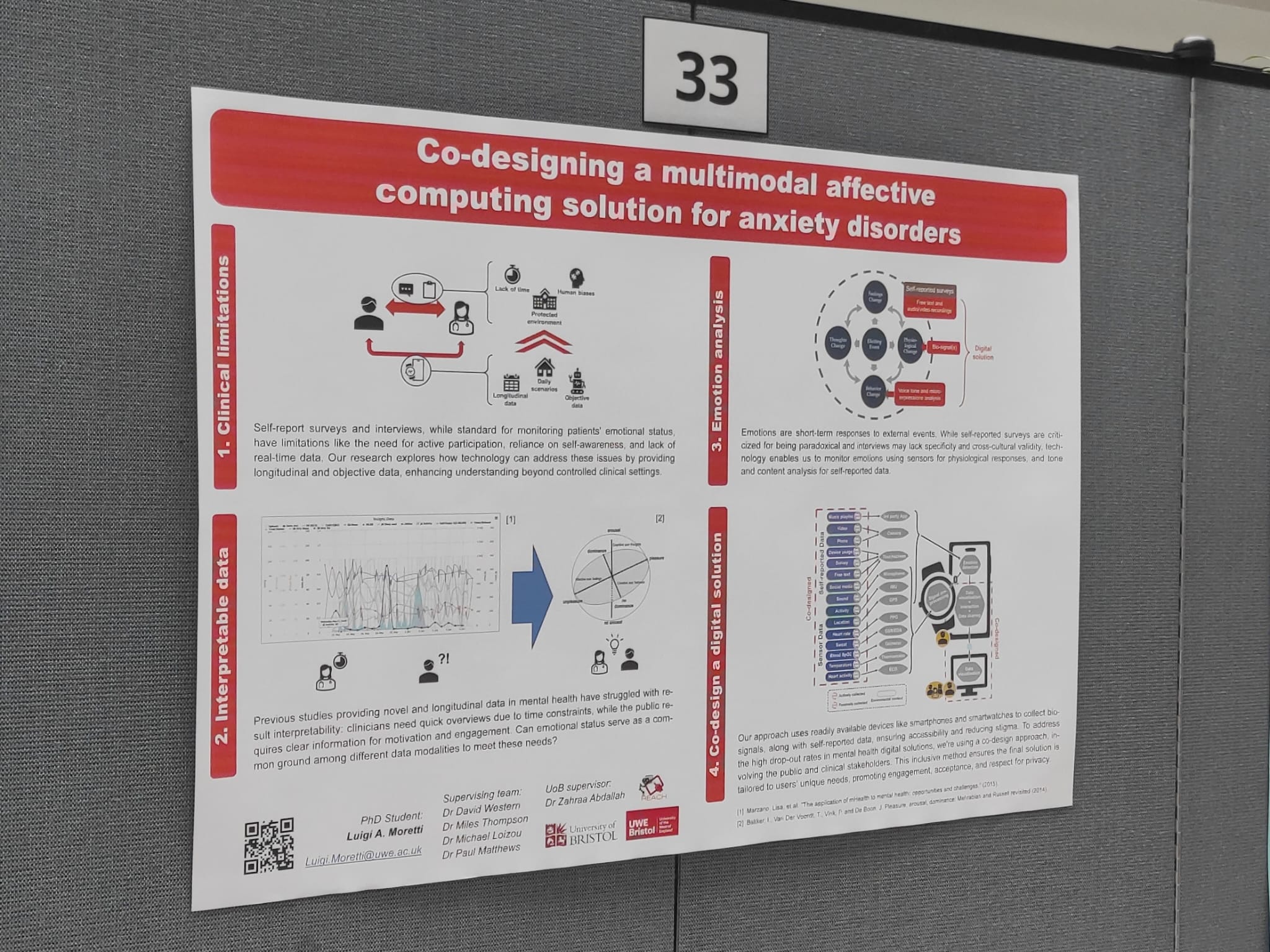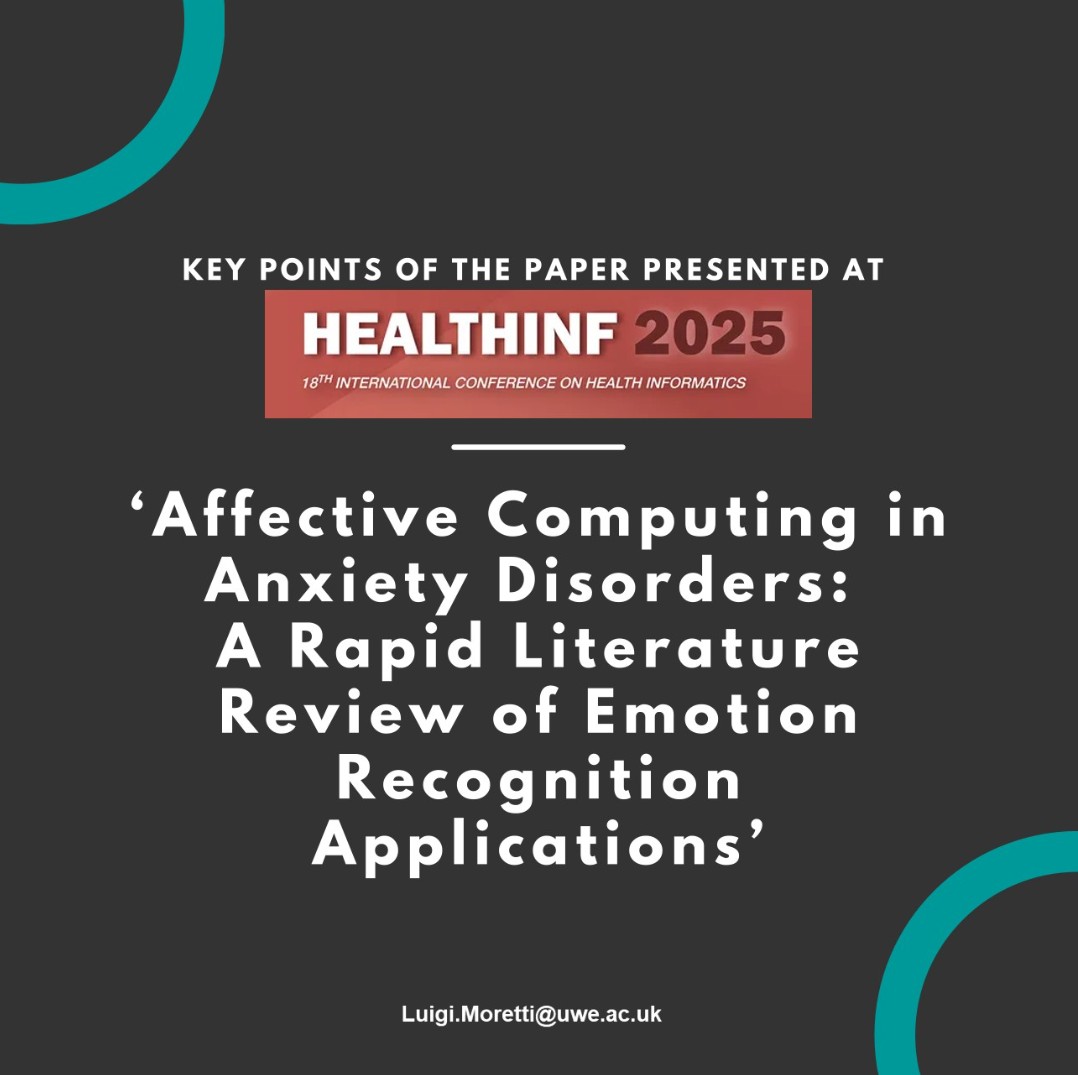Research & Methodology
Abstract
Anxiety disorders present persistent challenges of underdiagnosis and misdiagnosis due to difficulties in differential diagnoses and the presence of common comorbidities. Standard self-reported approaches for assessing emotional regulation face criticism for their paradoxical nature, while semi-structured interviews can lack specificity and cross-cultural validity. This project explores how affective computing can address and mitigate these issues.
Objectives
- To co-design a digital emotion-monitoring tool with and for individuals with anxiety disorders, enabling the collection of longitudinal data in real-world contexts.
- To provide structured, interpretable, and longitudinal data that can support and enrich clinical conversations.
- To support the interruption of anxiety loops.
- To support early help-seeking behaviour by improving emotional literacy.
Methodology
To address high dropout rates in digital mental health tools and focus on real-world needs, our co-design process involves people with anxiety disorders, unpaid carers, and clinicians across six phases, of which three have already been completed. Our approach focuses on using longitudinal emotion recognition data to identify anxiety patterns from bio-signals (e.g., heart rate, electrodermal activity) and user-generated data, such as diaries and recordings. Information from mobile phones and wearables allows us to contextualise both the emotion data collected and the suggested coping strategies.
Key Concepts
What are Anxiety Disorders?
Anxiety Disorders are a group of mental health conditions characterized by significant feelings of anxiety and fear. These include Generalized Anxiety Disorder (GAD), Obsessive-Compulsive Disorder (OCD), Panic Disorder (PD), Post-Traumatic Stress Disorder (PTSD), and Social Phobia (or Social Anxiety Disorder, SAD). To illustrate the scale of the issue, approximately one in ten people in the UK are affected (Adult Psychiatric Morbidity Survey, 2014), yet these conditions remain significantly under- and misdiagnosed due to clinical complexity and comorbidities [3].
What is Affective Computing?
A field of computer science that studies and explores emotions and their components. It involves developing systems and devices that can recognize, interpret, process, and simulate human affects, often by analyzing physiological and behavioral signals. Research consistently shows that in this field, multimodal approaches (using multiple data sources) tend to outperform unimodal ones [3].
Insights from Our Research
What are the common technologies used for emotion recognition in anxiety research?
Current research often relies on analyzing bio-signals collected from wearable devices. The most prevalent approaches quantify emotion using a model of valence (positive vs. negative) and arousal (intensity). Many existing studies have a strong focus on specific conditions like Post-Traumatic Stress Disorder (PTSD), showing the potential for these technologies in targeted clinical applications, and trans-diagnostic approaches are also promising [3].
What are the main opportunities for this technology in mental health?
The literature highlights a significant opportunity to use affective computing to enhance and support traditional care. Key applications include monitoring treatment progression in therapies like CBT, assessing the efficacy of advanced treatments, and most importantly, fostering a more patient-centric approach by enhancing the quality of the interaction between clinicians and patients [3].
How does MEMoPAD's approach address the current gaps?
While existing research is promising, many studies are conducted in controlled lab settings. MEMoPAD aims to address this by focusing on collecting longitudinal data in real-world contexts using consumer wearables. Furthermore, by emphasizing a co-design methodology from the very beginning, we ensure the final tool is not only technologically advanced but also truly usable, interpretable, and valuable to both individuals with anxiety and their clinicians [3].
Key Words
References
[1] M. Berking and P. Wupperman, ‘Emotion regulation and mental health: recent findings, current challenges, and future directions’, Curr. Opin. Psychiatry, vol. 25, no. 2, pp. 128–134, Mar. 2012, doi: 10.1097/YCO.0b013e3283503669.
[2] Noorbergen, T.J., Adam, M.T., Teubner, T. and Collins, C.E., 2021. Using co-design in mobile health system development: a qualitative study with experts in co-design and mobile health system development. JMIR mHealth and uHealth, 9(11), p.e27896.
[3] Moretti, L. A., Thompson, M., Matthews, P., Loizou, M., & Western, D. (2025, January). Affective Computing in Anxiety Disorders: A Rapid Literature Review of Emotion Recognition Applications. In Proceedings of the 18th International Joint Conference on Biomedical Engineering Systems and Technologies. Read paper

